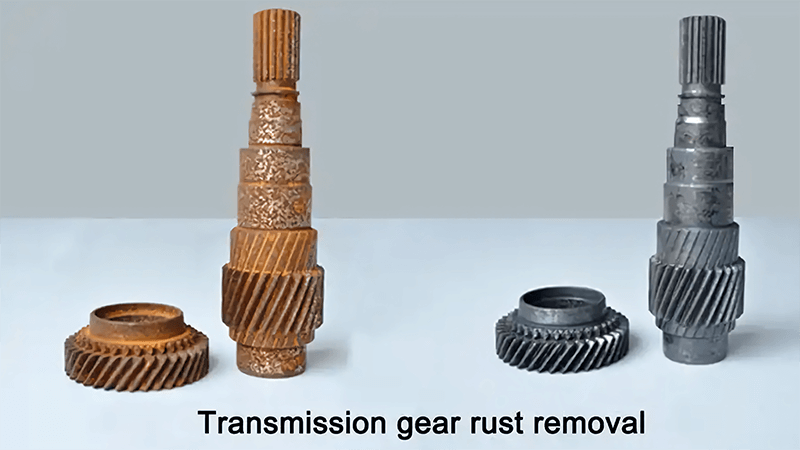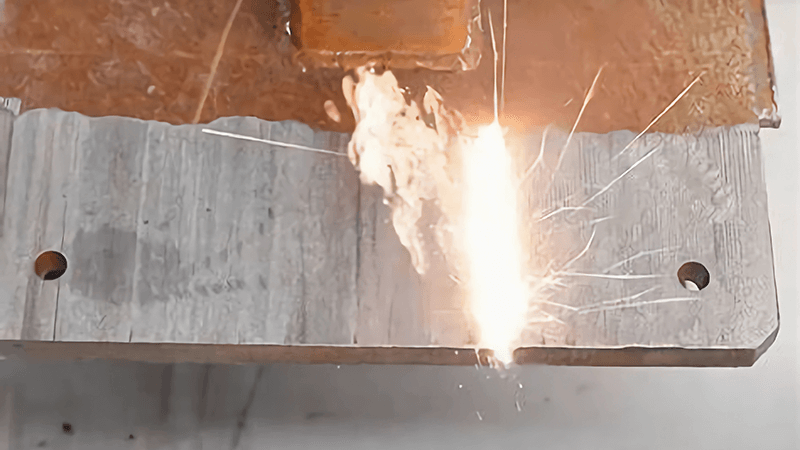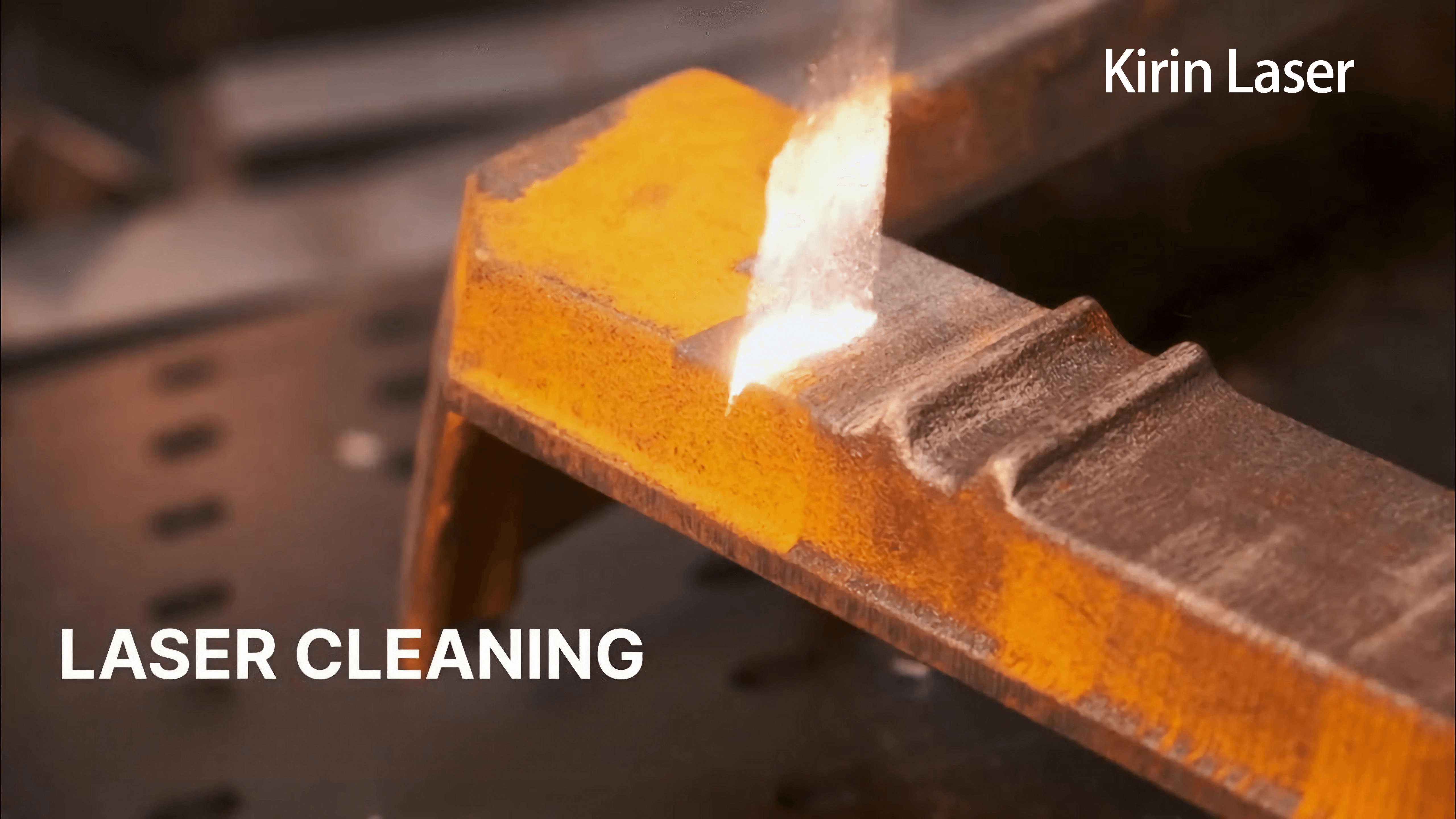Laser cleaning is changing the way we deal with rust, paint, and industrial grime. Traditional methods like sandblasting or chemical stripping create mess, noise, and risk. But laser cleaning? It uses light. Just focused, pulsed light to remove contaminants. No abrasives. No chemicals. No headaches.
Laser cleaning is a high-precision, eco-friendly technology that removes rust, paint, and contaminants from surfaces using nothing but light. It’s fast, clean, and perfect for industries where precision matters.
From automotive to aerospace, laser cleaning is gaining traction. I’ve seen it solve real problems in real factories. In this article, I’ll break down how it works, what it can remove, how safe it is, and how long the results last — all from my hands-on experience at Kirin Laser.

Does laser cleaning really work?
A lot of people doubt it at first. They say: “Wait, you’re telling me light can clean off millimeter-thick rust?” I get that. I had the same reaction when I first saw it. But then you see it in action, and it clicks.
Yes, laser cleaning works — and it works incredibly well. It removes oxidation, paint, oil, and more with minimal effort. It’s clean, consistent, and requires no consumables.
Why does laser cleaning work so well?
Laser cleaning is based on the principle of ablation1. When a laser hits the surface, the contaminant layer absorbs the energy. This heats it rapidly and turns it into gas or dust. The substrate underneath — like clean metal — reflects the laser and stays intact.
At Kirin Laser, we use pulsed fiber lasers for our cleaning machines. These pulses are short but powerful. They deliver energy just long enough to vaporize surface grime, without overheating or damaging the base material.
Compare with traditional methods:
| Method | Media Required | Waste Generated | Surface Damage Risk | Noise Level | Speed |
|---|---|---|---|---|---|
| Sandblasting | Sand/Grit | High | Medium | Very High | Medium |
| Chemical Stripping | Solvents | Toxic | Low | Low | Slow |
| Laser Cleaning | None | Minimal Dust | Very Low | Low | Fast |
One client, who runs a metal fabrication workshop, used to spend hours blasting parts. After switching to our laser cleaning2 system, he saw a 70% reduction in prep time. That’s not a small win. That’s game-changing.

What can laser cleaning remove?
Many clients ask us: “Will it work on this?” The answer is almost always yes — if it’s a surface-level contaminant, laser cleaning can probably handle it.
Laser cleaning removes rust, paint, oil, oxides, mold, carbon buildup, and even some coatings like anodized layers or powder coat — without damaging the base material.
Let's break it down by use case:
1. Rust and Oxidation
Laser cleaning shines when it comes to rust3. It vaporizes iron oxide instantly, leaving behind bright, bare metal. That’s ideal for prep before welding or coating.
2. Paint and Coatings
It can strip layers of industrial paint — even powder coatings — without harming aluminum, stainless steel, or carbon steel. That’s huge for automotive and shipbuilding sectors.
3. Oil and Grease
Cleaning engine blocks or mold parts? Lasers remove oil films in seconds. No degreasers needed.
4. Carbon and Burn Residue
In aerospace and electronics, laser cleaning removes carbon deposits and discoloration after welding or soldering.
5. Stone and Historical Surfaces
We’ve seen restorers use low-power lasers4 to clean sculptures or building facades. It’s precise enough to clean delicate stone without touching it.
Material compatibility:
| Surface Material | Cleanable? | Notes |
|---|---|---|
| Carbon Steel | ✅ | Ideal for rust, paint, grease |
| Stainless Steel | ✅ | Great for oxide and polishing prep |
| Aluminum | ✅ | Needs careful power tuning |
| Plastic/Polymer | ⚠️ | Possible, but risk of melting |
| Wood | ⚠️ | Only under expert control |
| Stone/Marble | ✅ | Used in conservation/restoration |
So, whether you’re running a shipyard or a repair garage, laser cleaning adapts to the job.

How safe is laser cleaning?
This is a fair question. Any high-power equipment raises safety concerns. But here’s what I tell clients: lasers can be dangerous — but with the right precautions, laser cleaning is very safe.
Laser cleaning is safe when used with proper training, protective gear, and enclosure. Modern machines come with built-in safety features like sensors, shielding, and emergency stops.
Key safety considerations:
1. Laser Class
Most industrial cleaning lasers fall into Class 4 — meaning they can cause eye or skin injury. But this doesn’t mean they’re unsafe. It means they need respect.
We ship all Kirin Laser systems5 with safety goggles, training materials, and remote-control start. Many models also have built-in interlocks and shields.
2. Fume and Particle Extraction
As the laser ablates surface contaminants, it creates fine dust and vapors. That’s why a fume extractor is a must. We include HEPA-rated filtration systems with most of our models.
3. Noise
Unlike blasting, laser cleaning6 is very quiet. But high-speed fans and blowers can create moderate noise levels, so ear protection is still a good idea in enclosed spaces.
4. Training
At Kirin Laser, we offer full remote and on-site training for our clients. Most teams get up and running in a day. The learning curve is flatter than people expect.
Summary of safety features:
| Feature | Included in Kirin Machines |
|---|---|
| Protective eyewear | ✅ |
| Laser interlocks | ✅ |
| Emergency stop switches | ✅ |
| Fume extraction | ✅ |
| Software power control | ✅ |
| Remote monitoring (optional) | ✅ |
Laser cleaning is like welding — once the safety is handled, it becomes a daily tool. Not dangerous, just powerful.

How long does laser cleaning last?
This is where many folks get curious. They ask: “If I clean this beam today, will it rust again next week?” The short answer: it depends. But the cleaning itself? That’s permanent.
Laser cleaning offers a permanent surface preparation. How long it lasts depends on the environment — not the laser. Post-cleaning treatments like coatings or oils help preserve the cleaned surface.
What does “lasting” really mean?
Let’s say you use a Kirin Laser machine to remove rust from a steel plate. The rust is gone, and the bare metal is exposed. That metal is now vulnerable to the environment. If it’s humid or salty, oxidation will return.
That’s why many clients use laser cleaning7 as a prep step. They clean, then immediately apply:
- Welds – Lasers prep metal surfaces for stronger, cleaner welds
- Coatings – Like powder coating, primer, or plating
- Lubricants – In die or mold maintenance
- Rust inhibitors – Oils or sprays
Case Example:
We had a client who cleaned turbine blades in a hydroelectric plant. The laser removed biofilm and rust buildup. After cleaning, they applied a hydrophobic coating8. Six months later, zero corrosion.
Summary:
| Use Case | Laser Cleaning Role | Post-treatment Needed? |
|---|---|---|
| Welding Prep | Removes oxide/grease | No |
| Paint Removal | Strips paint to bare metal | Yes |
| Mold Maintenance | Removes buildup | Optional lubricant |
| Art Restoration | Cleans surface | No |
| Shipbuilding | Rust removal | Yes (primer/coating) |
So no, the laser doesn’t “wear off” — but bare surfaces don’t stay clean forever. That part is up to you.

Conclusion
Laser cleaning9 isn’t just another tool — it’s a cleaner, smarter, faster way to prep and maintain surfaces. It works on a huge range of materials, it’s safer than blasting, and when used correctly, it gives lasting, professional results. At Kirin Laser, we believe in making this tech accessible to every workshop and industry. Because once you try it, there’s no going back.
-
Learn about the ablation process in laser cleaning to grasp how it effectively removes contaminants without damaging surfaces. ↩
-
Explore the advantages of laser cleaning technology to understand its efficiency and effectiveness compared to traditional methods. ↩
-
Explore how laser cleaning effectively removes rust, ensuring a clean surface for welding or coating. ↩
-
Discover how low-power lasers offer precision cleaning for delicate stone surfaces, preserving historical integrity without physical contact. ↩
-
Explore how Kirin Laser systems enhance safety and efficiency in industrial cleaning with advanced features like remote control and fume extraction. ↩
-
Discover how laser cleaning technology works and its applications, ensuring safe and efficient industrial cleaning processes. ↩
-
Explore this link to understand how laser cleaning enhances metal surface preparation and prolongs durability. ↩
-
Discover the science behind hydrophobic coatings and their effectiveness in protecting metals from corrosion. ↩
-
Find the best laser cleaning machine and laser cleaning solutions for your needs, clicking this link to get all for your applications. ↩





